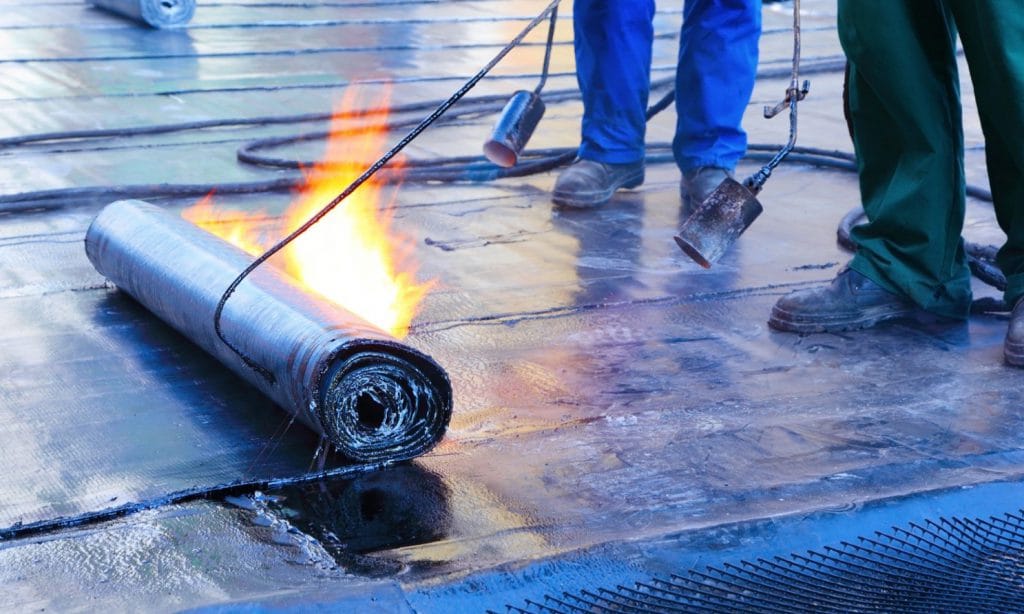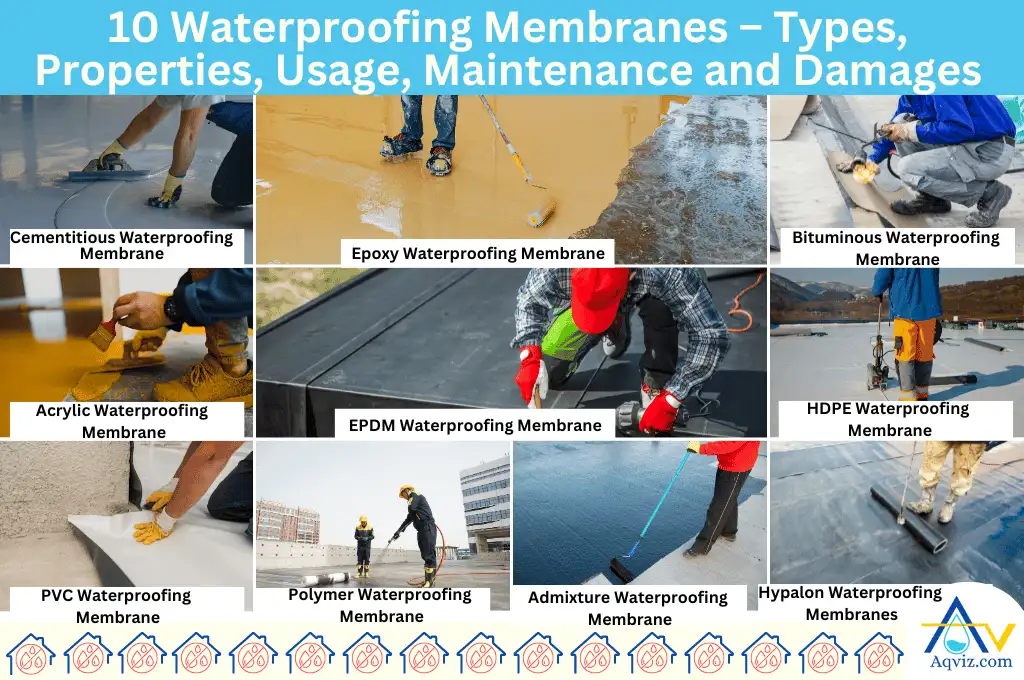Yard drainage Omaha: Local Success Stories from Omaha Homes
Wiki Article
Types of Waterproofing: Exploring the Various Methods and Their Applications
Waterproofing is an important aspect of building and maintenance. It secures frameworks from the detrimental impacts of water damage. There are numerous approaches offered, each with its one-of-a-kind applications and advantages. From membrane layer systems to cementitious solutions, understanding these choices is essential for efficient application. The option of waterproofing method can greatly influence toughness and durability. Discovering these various techniques reveals their distinct advantages and potential obstacles, triggering further consideration of perfect remedies.Membrane Layer Waterproofing Equipments
Membrane layer waterproofing systems function as an essential barrier against water breach in various structures. These systems normally consist of slim sheets made from materials like rubber, thermoplastic, or asphalt, which are put on surface areas to avoid wetness penetration. They can be mounted above or listed below quality and are specifically efficient in areas vulnerable to high water direct exposure, such as cellars, roof coverings, and foundations.The installment procedure entails cleaning up the substrate, using adhesives or primers, and precisely suitable the membrane to ensure complete protection. Membrane layer systems can be either fully stuck, mechanically affixed, or laid loose, depending upon the details requirements of the task. They supply toughness and adaptability, suiting structural motions without compromising their waterproofing capacities. Furthermore, these systems can be strengthened with extra layers for boosted defense. Eventually, membrane layer waterproofing systems are vital for safeguarding frameworks versus water damages and preserving lasting honesty.Liquid-Applied Waterproofing Coatings
Liquid-applied waterproofing finishes offer a functional option for protecting surface areas from water seepage - Foundation waterproofing Omaha. These coverings contain fluid products that, when applied, create a smooth, flexible membrane layer. Their adaptability permits application on different substratums, consisting of concrete, steel, and wood. The coatings can be utilized in varied settings, from domestic to commercial setups, making them suitable for roofing systems, structures, and below-grade structures.One substantial advantage of liquid-applied finishings is their ability to satisfy uneven forms and permeate splits, creating a durable barrier against wetness. They usually show exceptional adhesion residential or commercial properties and resistance to UV radiation, guaranteeing long life and longevity. In addition, the application procedure is usually simple, permitting quick setup and lowered labor prices. This approach also minimizes the danger of water merging, as the continual layer properly guides water far from vulnerable locations. In general, liquid-applied waterproofing finishings are a reliable selection for detailed water securityCementitious Waterproofing Solutions

Cementitious waterproofing remedies supply a durable option for structures calling for trusted moisture security. These systems primarily use a blend of cement, sand, and chemical ingredients to create a water-proof see here now barrier. They are frequently put on surfaces such as concrete walls, foundations, and floorings, providing a durable, resilient protection versus water intrusion.One of the essential advantages of cementitious waterproofing is its ease of application; it can be applied utilizing a brush, roller, or spray, making it appropriate for various project sizes. In addition, this approach is suitable with lots of surfaces and can frequently be utilized in combination with other waterproofing techniques.Cementitious remedies are specifically effective in environments where water direct exposure is a problem, such as basements or below-grade frameworks. Their excellent bond properties guarantee that they bond well with substratums, offering a solid and impenetrable layer against moisture infiltration.
Bentonite Waterproofing
Bentonite click for source waterproofing is a highly efficient technique that makes use of salt bentonite clay to produce an all-natural obstacle against water. This strategy makes use of the distinct homes of bentonite, which increases upon call with water, sealing any type of potential leakages and avoiding dampness seepage. It is frequently made use of in numerous applications, consisting of structure walls, tunnels, and keeping walls, where water resistance is essential.Bentonite can be used in a number of forms, such as panels or coverings, supplying versatility in installment. Its capacity to self-seal makes it an attractive alternative for locations subject to moving soil or ever-changing water degrees. In addition, bentonite waterproofing is eco friendly, as it is a natural product that does not present hazardous chemicals into the environments.Water Drainage and Outside Waterproofing Solutions
Effective waterproofing commonly involves a mix of approaches, consisting of drainage and exterior systems. Drain systems, such as French drains and sump pumps, are created to redirect water away from frameworks, minimizing hydrostatic stress versus foundations. These systems are essential in avoiding water accumulation that can lead to architectural damage and mold growth.External waterproofing, on the various other hand, entails applying safety obstacles to the building's outside. Techniques such as the installment of water resistant membrane layers, coatings, or sealers can assist avoid water infiltration. This method not only safeguards the foundation however likewise improves the overall durability of the structure.Together, drainage and external waterproofing systems create a detailed remedy to take care of water effectively. By carrying out these strategies, homeowner can safeguard their financial investments versus the harmful impacts of moisture, making certain long-term stability and safety and security for their structures.Frequently Asked Questions
How Do I Pick the Right Waterproofing Method for My Task?
Selecting the right waterproofing method tank waterproofing depends upon factors such as task kind, ecological conditions, budget, and desired durability. Examining these facets enables notified decisions tailored to certain requirements and requirements.
Can Waterproofing Be Applied in Winter Issues?
Waterproofing can be used in winter problems, yet it requires specific materials and techniques. Cold temperatures might affect curing times and adhesion, requiring careful choice of items made for low-temperature application.
What Are the Usual Indications of Waterproofing Failing?
Typical indicators of waterproofing failure include noticeable water spots, peeling paint, damp odors, mold and mildew development, and splits in walls or structures. Water Solutions. These indications recommend that dampness is passing through the obstacle, jeopardizing its effectivenessThe Length Of Time Does Waterproofing Last Prior To Requiring Maintenance?
The durability of waterproofing differs, typically lasting between 5 to ten years. Aspects such as material quality, environmental conditions, and maintenance techniques influence its durability, necessitating periodic evaluations to ensure reliable protection against water invasion.Are There Eco-Friendly Waterproofing Options Available?
The question of green waterproofing choices exposes a growing interest in sustainable products (Sump pump installation & replacement Omaha). Different all-natural compounds, such as plant-based sealants and recycled products, use effective remedies while reducing environmental impact, interesting ecologically conscious consumersReport this wiki page